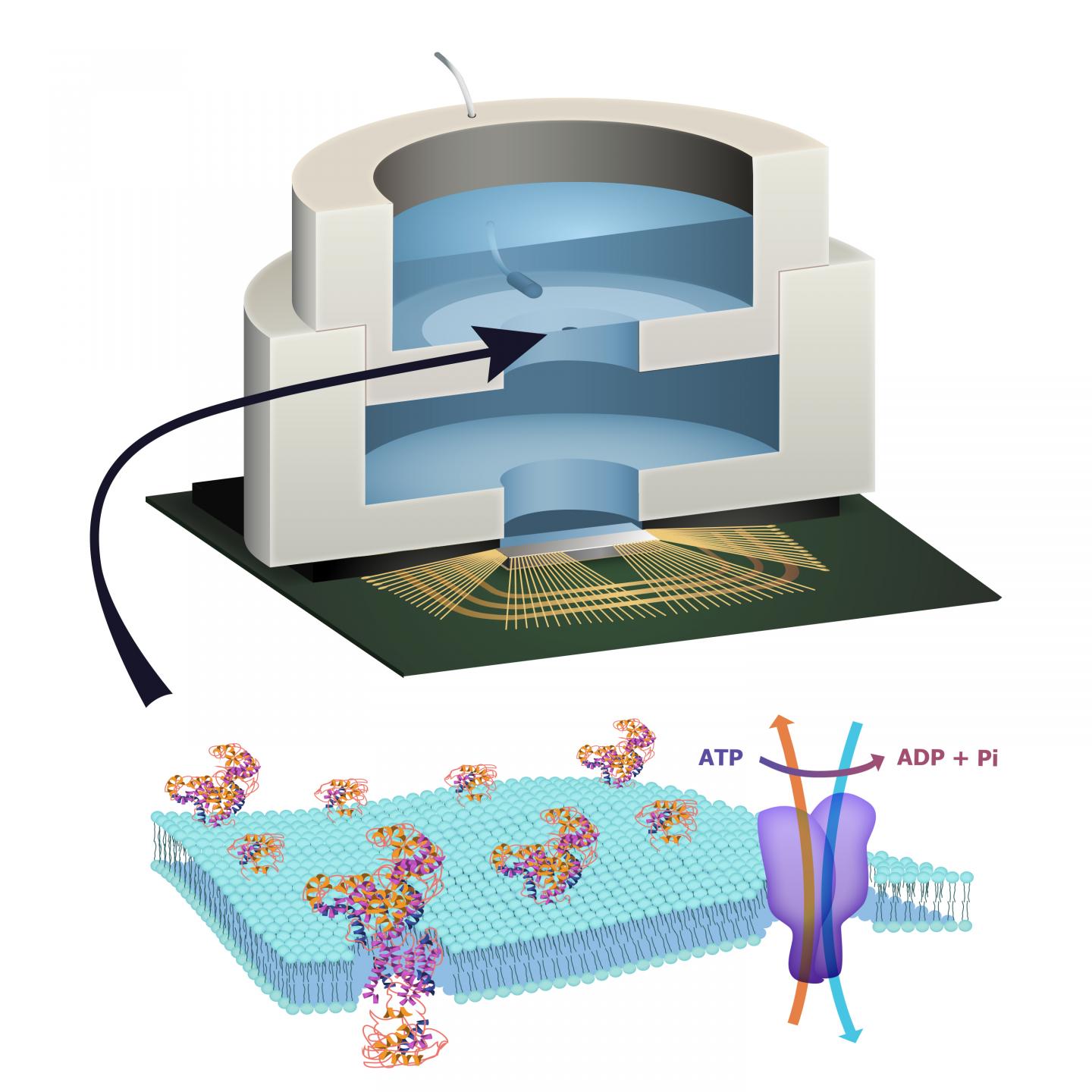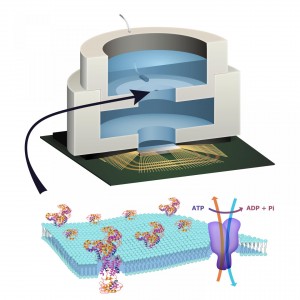A Semi-Biological Integrated Circuit Powered by ATP

Engineers from Columbia University (CU) have developed an integrated circuit that uses adenosine triphosphate (ATP), the molecular unit of currency, as a source of energy. The researchers created an artificial system with both biological and artificial, solid-state components. The study was published in the journal Nature Communications.
ATP transports chemical energy inside cells, and is basic for cell metabolism. ATP is an end product of photophosphorylation, fermentation and cellular respiration. ATP synthase and other enzymes can produce ATP, which is constantly recycled in the organism. Enzymes use it in biosynthetic pathways where it is converted back to its precursors, adenosine (an adenine ring and a ribose sugar) and three phosphate groups. CU researchers hypothesized they could harvest energy with biological tools but, unlike in previous experiments where whole living cells were used, they wanted to exploit only the cell parts that produce the energy -ATPases.
Biological systems use ions to transport energy and information, and ion channels control their flow across membranes. Solid-state systems, like the ones found in computers, use electrons, and the signaling is controlled by transistors.
The researchers combined a solid-state complementary metal-oxide-semiconductor (CMOS) integrated circuit with an artificial lipid bilayer that contained ion pumps that use ATP. When ATP is present, the pump translocates ions through the membrane, producing an electrical potential in the membrane that is harvested by the integrated circuit.
The model was built at the milimeter scale, to prove more easily if energy could be harvested from the biological system to power the CMOS. Now, the researchers plan to scale it down.
This research opens the door to give properties to either system -solid-state or biological- that would be impossible to have by themselves alone. Apart from harvesting energy from ATP, other uses are contemplated like replicating biological functions.
Source: Columbia Engineering

